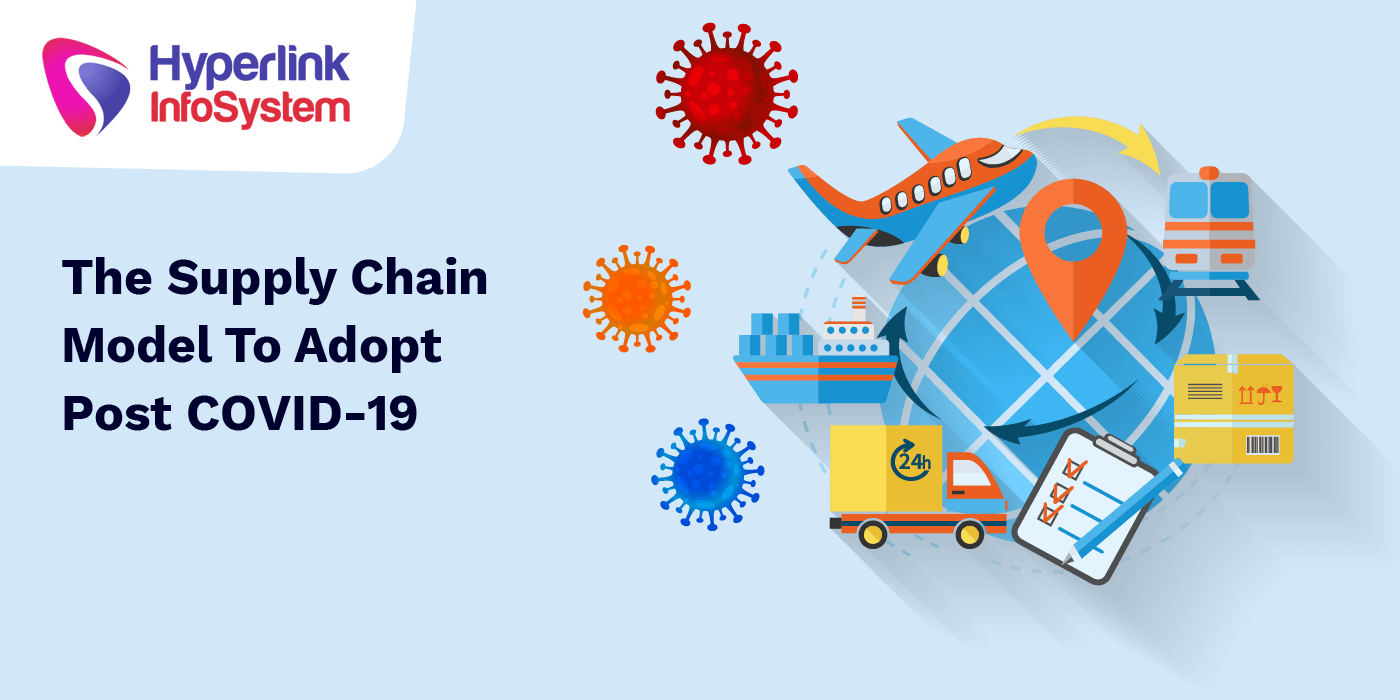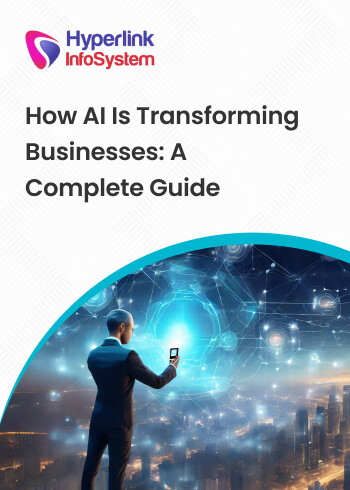While the Coronavirus inflicts worldwide economic chaos, modern supply chains are facing unprecedented pressures and a heightened degree of scrutiny. As the world deals with the imploding human and economic crises happening now, supply chains are being presented with new and unprecedented problems of their own.
Will COVID-19 be the event that compels many organizations and even some industries to rethink and ultimately change their supply chain model? COVID-19 has already highlighted many organizations' shortcomings, especially those who rely heavily on Chinese companies to meet their need for finished goods or raw materials.
China's leading position as the "world factory" implies that any significant disruption could jeopardize global supply chains. The sensitivity of the problem is highlighted by the fact that over two hundred of the Fortune 500 companies have their operations in Wuhan, the province where the coronavirus pandemic originated.
This means that 200 of the Fortune 500 companies—as well as the other businesses and consumers that depend on them—have been affected in some way by the three-month-long lockdown in the Wuhan province of China. Add to this the lockdown in the countries where these companies are based and we have a real problem on our hands.
To curb the spread of the virus, the Chinese government imposed lockdowns and restrictions in December 2019, including closing down many production sites. This had an impact on the country’s economy as many industries could not operate as usual. This was reflected in the drop in industrial production in China during January and February. The following graph illustrates this:
As can be seen in the graph above, industrial production in China had an upward trajectory from 2000 up until 2019. 2020 was the first time in almost 20 years we saw a drop in industrial production in the country. Needless to say, this was caused by the coronavirus pandemic. Since many companies all over the world rely on China for production, this decline in industrial production had a devastating effect not just on the Chinese economy, but also on companies in other countries and the economies they support.
Production or procurement of raw materials is the first stage of the supply chain and China has almost a monopoly in this area. Most companies and countries in all five continents are dependent on the Chinese for this.
This is already evident in the supply chain delays caused by the COVID-19 outbreak worldwide. The following graph shows the percentage of companies in different sectors that had to face delays in supply chains due to the COVID-19 outbreak:
(Percentage of companies in different sectors worldwide facing supply chain delays due to COVID-19 [Image Source])
As can be seen in the graph above, the consumer sector is the worst-hit by supply chain delays caused by COVID-19. The industrial is also affected badly and so is the automotive industry. The defense/government, aerospace, medical, and other industries are also affected, but to a lesser extent.
It is understandable why the consumer and industrial sectors would be the worst-hit by the supply chain delays due to COVID-19—they have the greatest movement of all the sectors mentioned above. Even the slightest delay in the supply chain could mean loss of businesses for industrial and consumer-related businesses.
So, what are the measures that companies worldwide—especially those in the consumer and industrial sectors—can take to overcome the supply chain problem caused by COVID-19? One obvious measure would be to shift as much of their production activities as possible to their home country or where they are based. This would help to minimize delays significantly.
Another measure and this applies to all businesses in all industries are using technology where it can make the biggest difference to supply chain operations. Yes, inventory management systems, real-time tracking software, ERP systems are all important but you need to think out of the box to improve your supply chain operationstruly and in doing so significantly increase your profitability.
Before we get to these out-of-the-box solutions for improving supply chains, it is important to understand why achieving IT efficiency is the first step in overcoming the problems in your supply chain and ultimately increasing profitability.
How IT Efficiency Enhances Supply Chain to Improve Profitability
If you want to drive business profitability through improved supply chain operations, then there are three key areas that you need to focus on. The three areas you need to focus on are increasing turnover, reducing costs, and increasing efficiency. For most businesses, improving efficiency is the least preferred option to increase profitability. Generally, businesses look to improve profitability by increasing turnover. However, as not all customers are willing to buy, increasing turnover can be a real challenge.
The second option for businesses to improve profitability is reducing costs. Generally, the employees of a company are its biggest expense. For this reason, businesses look to increase the available capital by decreasing the workforce. While reducing the costs by decreasing the workforce may help you to improve profitability temporarily, it isn’t an effective strategy for long-term growth and sustainability. The final way to improve profitability is improving efficiency. Time and again, it’s been proven that increasing efficiency is the best way to improve profitability.
A great way to improve your bottom line is creating a more efficient workplace. When it comes to efficiency, a key area that you need to focus on to improve your business profitability is increasing your IT efficiency. You will create problems in your organization if you use old and outdated technology.
Old and outdated technology lacks the features that your business requires to stay efficient and competitive. An efficiency killer, old technology is kept by businesses that are hesitant to invest in new technology. If you’re one of the then you need to know this investing in new technology may cost you a bit, but it will pay off immensely in the long term. The following are two major ways by which IT efficiency improves profitability.
1. Automate Tasks to Save Time
How do you currently do business? Are the tasks that you do over and over again? Are there any manual processes that you could automate with technology? If you answered yes to these questions, then you should invest in new technology to automate your tasks and processes right away. By automating your business tasks and processes, you will save a significant amount of time. You can use the time you save to improve your business and increase profitability
2. Ensure On-Time Delivery
You won’t experience profitable growth if you’re unable to deliver products to customers when they expect them. You could get the right raw materials and innovate but this would be of little use if your customers don’t get what they need on time.
Whether you make consumer products or components that are integrated into larger systems, you need to ensure the on-time delivery of your products to customers if you wish to improve profitability. To do that, you need to have systems in place that allow you to plan strategically, make reliable predictions and adjust your production line and supply chain as required.
You can ensure all of these things by tapping into advanced business intelligence (BI) tools to increase your IT efficiency. By using the BI tools to increase IT efficiency, you will be able to deliver products to your customers on time and improve profitability.
Companies are expected to spend $15 trillion in IoT between 2017 and 2025. The forecast is that advanced IoT devices will add between
$4 trillion and $11 trillion to the world economy by 2030. The following infographic from a Mckinsey study illustrates this:
(Potential economic impact of IoT by segment [Image Source])
From the above infographic, we find that the greatest impact of IoT between 2017 and 2025 will be witnessed in the factory. Why are we talking about IoT? We are talking about it because the advent of connecting devices and machines provides the supply chain field with a massive volume of data that can have a huge effect on the performance and efficiency of supply chains. Business Intelligence (BI) tools can help do this by providing the following solutions.
1. Real-Time Dashboards
Supervisors and executives who want a fast, regular summary of what's going on in their logistics or supply chain environment can use dashboards that provide near-real-time details to help users identify – and fix – issues as they unfold.
The dashboards also offer companies the benefit of fast reaction time. Since dashboards are updated with each business/operational activity, users need not wait before someone compiles and sends reports. This way they can respond more quickly to market changes.
2. Benchmarking
Comparing data on variables like the rates of freight and percentages of on-time delivery against peers helps businesses to get a more accurate view of their competitive efficiency. Many businesses are utilizing BI tools to accentuate patterns in historical records which can give insights into the long-term opportunities and risks in their logistics or supply chain networks. These tools for predictive analysis utilize data-driven insights in real-time to accelerate decision-making and help build a fast and adaptive supply chain.
3. Actionable Data
BI tools deliver data through a single data model to enable conflicting interpretations and report data that cannot be compared to be avoided, thereby allowing the data to be more efficient. The details and reports can be given in real-time to demonstrate the current state of the market.
4. Business Objective Alignment
BI systems enable you to align all supply chain activities with company priorities by intelligently presenting KPIs so that metrics, real results, and related patterns can be viewed from one perspective. KPI objectives may be allocated to each business unit to calculate the progress towards the accomplishment/non-accomplishments of the goal. Therefore, if you are looking to achieve efficiency in your supply chain, then investing in BI software should be a no brainer.
There are many outstanding BI solutions available today that are helping supply chain managers and executives to prepare their BI strategy according to the unique needs of their company. As a result, BI tools are fast becoming an integral part of logistics and supply chain operations.
5. Distribution BI
Making sure that an item reaches the consumer within the specified time is critical to a business's success. Organizations can use BI tools to monitor the delivery to demonstrate that fleets are fulfilling service-level delivery agreements. Additionally, this can help logistics or supply chain managers to effectively tackle problems such as traffic, bad weather, and other similar incidents.
6. Intelligent Demand Planning
Managing demand is important to supply chains as it dictates how much inventory is required to meet profit numbers for the company. BI tools can help companies better predict demand needs. Through the comparison of both pipeline and historical sales estimates with customer sentiment, supply chains can better predict how much time and money they would need to spend on production
When a business produces more or less than the demand, then this directly impacts the profitability of supply chains. Therefore, it is critical to accurately forecast demand, which can be accomplished with the help of business intelligence (BI) software.
7. Intelligent Inventory Management
By using BI tools to access data from the inventory, supply chain managers can maximize volume numbers for the greatest profits possible. Businesses looking to prevent a shortage or surplus may want to use this knowledge to ensure that they do not sit on too much inventory after a busy season or that they are not short on inventory when needed. The majority of inventory solutions monitor supplier info, acquisitions, and sales figures. By integrating all this inventory data into a single BI platform, managers can ensure optimal inventory volume for their companies every time.
As seen above, BI software provides a variety of advantages to the supply chain. Logistics and supply chain managers can use this software to obtain focused insight into the history, present, and future of the company for informed decision-making. This is important because uninformed decisions can create a hole in your hole.
One area where this is evident is the inventory management of fast-moving consumer goods (FMCGs). Of course, using business intelligence tools can help alleviate some of the problems in FMCG inventory management that create a hole in your project. However, there is another solution to these problems that the experts recommend. The problems in FMCG inventory management and the recommended solution for them are discussed next.
Problems in Fast Moving Good’s Inventory Management Creating a Hole in Your Pocket and How to Overcome Them
Dealing with fast-moving consumer goods (FMCGs) can be an extremely lucrative business if you possess the management skills that trade requires. Some of the pitfalls of the industry that business owners must learn to deal with and avoid are spoilage, storage costs, and deadstock amongst others. These problems can slowly start eating away at your profits. To overcome them though, you need to first know what your problems are.
1. Dead Stock
This is the stock that cannot be sold. It does not only include stock that has expired, but also unusable stock due to seasonal fluctuations in demand, or just a diminishing lack of demand. Additionally, every day good is not being sold and taking up space, you are losing money on by not focusing on goods that could have replaced them and gotten sold.
2. Lack of Updates
The biggest characteristic of an FMCG store or business is the large volume of goods it deals with. It can get hard knowing what exactly is available in your store and what you need to order urgently. You could potentially be losing money by not being able to fulfill orders due to insufficient stock.
3. Spoiled relationships
A crucial part of a good management system is maintaining good relationships. This is especially important for vendors. A bad relationship with a vendor can lead to a loss of inventory or higher costs. If payments or shipments are not documented well, vendors can quickly turn against you.
The Solution
The recommended solution for the above-mentioned problems in FMCGs creating a hole in your pocket is a point of sales (POS) management systems. Why do I recommend using a POS system for overcoming the above problems? First, with a POS system, you can better manage your dead stock and deal with them before they start taking up valuable space in your storage or displays. A POS system will let you know which goods are about to fall into this category, well before they turn into dead stock.
With a POS system, you are updated all the time. You will know that you are running out of a certain good before it runs out. This will allow you to place your orders well in advance. It’s better to attack the problem before it becomes one.
Lastly, a POS system will help you keep track of orders and their payments. There is no point in risking a good relationship because you never know how a new one will turn out.
This is where an improvement in inventory management becomes the order of the day. To deal with these issues and better improve their business by turning into an efficient well-oiled machine, managers or owners can opt to use a POS management system. This will help them efficiently tackle any ongoing problems or any that may arise in the future.
There are a whole lot of issues that may arise at any time due to poor inventory management in the FMCG world. Don’t wait for a problem, see it coming and take care of it before it becomes a revenue eating issue, by using effective management tools.
Talking about managing issues, nothing is more important to manage for improved supply chain operations and increased profitability than customer relationships. This makes customer relationship management (CRM) software and CRM analytics critical for any business looking to improve customer service, supply chain management, and profitability.
Why CRM Analytics Is Critical for Your Supply Chain and Business
From factory floors and warehouses to finance, HR, and marketing, data has helped shape strategic planning and processes across organizations for decades. While business intelligence has traditionally been confined to specialized legacy databases and administered by only a few technical users, this sort of siloed approach has become increasingly outdated.
In today’s digitally-enabled operating environment, employees at every level are forced to deal with an unprecedented variety, volume, and velocity, of data (estimated at 2.5 quintillion bytes a day). These individuals will continuously fail to create optimal value in their roles unless they are equipped with the tools to draw actionable insights from this raw information.
Analytics platforms hold the key to a more inclusive understanding. These automated systems can process vast quantities of real-time data in mere seconds and structure it into intuitive formats, where the most relevant information is always available to users.
Modern organizations are now looking to deploy end-to-end digital architectures that can incorporate analytics from different functions into one centralized repository. An integrated architecture should lead to more effective service delivery, as each individual will be able to see how their actions influence and interact with upstream and downstream processes, they can then adjust their workflows accordingly. This flexible new operating model for supply chains has been particularly successful in the rapidly evolving field of customer relationship management.
The Evolution of Customer Relationships
A decade or two ago, quality and price were considered to be the two main drivers for success in any industry. At the time, market leaders focused the majority of their investments on these factors, with full confidence that most consumers lacked the time and resources to find comparable alternatives. But today’s customers are armed with smartphones, 4G Internet, social media, and powerful search engines that can help them seek out a range of products and services from all over the world, at a variety of price points. These new capabilities have substantially disrupted the customer journey.
The road to conversion historically followed a relatively linear route. A person would identify a particular pain point and gather information on different businesses that could resolve this urgent need. Their investigation would ideally lead them to a product or service that met their requirements for pricing and quality.
Today, the same buyer might spend up to 60-70% of their time researching different brands through both offline and online platforms on different devices before purchase decisions are ever made. At every point of contact, customers produce a wealth of information that would benefit businesses immensely, if leveraged correctly. Unfortunately, much of this data is still restricted to specific functions depending on its source.
While marketing teams are privy to customer metrics derived from website traffic, social media feedback, and email campaigns, sales and support teams have sole jurisdiction over their purchasing histories and other P.O.S data. Meanwhile, suppliers and manufacturers are disconnected from any frontend insights altogether, save for the broadest of sales information.
It is almost impossible to create a consistent customer experience with this kind of fractured infrastructure in place. But in an era where 88% of people value customer service over innovative product and service offerings, and a further 69% are willing to switch brands due to a single negative experience a failure to meet rising customer expectations could significantly impact your business’s profitability.
How CRM Can Help
CRM systems act as a repository for a wealth of customer data. Everything from purchasing records, to call center complaints, email responses, support tickets, website visits, and online feedback can be collected and consolidated into individual profiles. Employees can update each profile in real-time with additional notes or corrections that reflect the current status of the customer. By centralizing data in this manner, businesses can give their employees a 360-degree overview of every customer’s journey.
CRM also helps to drive efficiency across frontline functions, as sales and support teams can instantly access relevant customer information during their online, offline, and on-call interactions and offer more tailored services to each person. With CRM, these teams can monitor individual cases and ensure that customers are receiving the best experience possible.
Sales representatives can proactively inform new clients of delays in product or service delivery, while support agents can follow-up on support tickets to confirm whether ongoing issues have been resolved. Again, all of the capabilities are enabled through a centralized system where a user can reach out to any customer through multiple channels with a few clicks.
CRM Analytics Offer a True Competitive Advantage
While an operational CRM can bring efficiency and cost-effectiveness to the frontend, analytical CRM applications can add value to every area of your enterprise. Analytical CRM software takes all of the consolidated data provided through CRM and uses it to create real customer understanding.
These insights can fuel initiatives that improve your production planning, logistics, marketing, and direct sales processes. CRM analytics tools are designed to create these kinds of customer-driven process transformations across your organization. You can leverage this platform in several ways.
1. Lead Generation
Conversions are the lifeblood of any successful business, but without a consistent pipeline of leads, it will be almost impossible to grow your customer base. While most companies will make use of corporate databases and other external sources to develop a clearer understanding of prospects in a particular region, these efforts are largely superficial. At the end of the day, marketing teams still rely more on intuition and internal guidelines for their campaigns while sales teams are often relegated to cold-calling to find new prospects.
CRM analytics can provide you with a far more granular understanding of customers across a variety of markets and segments. For example, some CRM analytics tools allow users to break down their sales areas into a variety of subcategories based on region and coverage. From there, the software can track relevant customer profiles in these areas to determine what these individuals are purchasing, how they are reacting to different product lines and features, and what kind of demographics they fall under. This internal information is then combined with data from external sources such as social media and website analytics to create a complete picture of customers in each subcategory.
Your marketing team can use these insights to create detailed buyer personas which will help them to create engaging content and advertising that is tailored to the interests and behaviors of specific audiences.
The prospects that are drawn in through these campaigns can then be further prioritized based on your ideal buyer personas. Closely matched leads can be forwarded to your sales team for direct contact, while cold leads can be further nurtured through emails and other additional materials. Once a low scoring lead demonstrates that they are ready to move on to conversion you can move them further down the sales funnel.
Analytics platforms can also help you to assess which channels are drawing the most high-quality leads to your business. You can then prioritize these platforms in future marketing campaigns. These data-driven strategies can help you build a self-sustaining customer pipeline.
2. Sales Planning
CRM analytics tools allow you to monitor sales performance against a variety of benchmarks. Rather than evaluating agents based on simplistic metrics, such as revenue earned, you can lift on the lid on their daily activities to examine how many calls, emails, and meetings they’re conducting every day. What type of leads they’re nurturing (segment, area). How many of their prospects they’re converting, the average size of these deals, and how long they take to close.
This information can help you allocate your human resources in a far more efficient manner. Rather than assigning all high-value prospects to your most productive performers, you can assess the individual interests of the potential client and determine which of your agents is best suited to delivering on those needs based on their past service history.
From a human resources perspective, HR teams can take analytics information from consistently high performers and use these insights to identify traits and behaviors which are proven to create success in the field. This analysis can encompass the best channels to approach specific segments, the most effective activities at various stages of the sales funnel, and at which point agents should try to close a deal. These guidelines can inform future recruitment processes as well as training and development for new trainees.
3. Creating Long-Term Customer Value
Research from Gartner shows that repeat customers are responsible for over
80% of business profits. This statistic illustrates just how important it is to maximize the amount that you are earning from your customers. Increasing customer value will require a more proactive approach to sales and support.
• Use your reporting tools to examine the actions customers take before terminating service subscriptions. Alternatively, take a look at the history of loyal customers that have not purchased through your business for an extended period. Analytics can help you identify patterns that are pushing customers away from your business, and it can show you the telltale signs that a customer is planning on switching to a competitor. These insights will help you develop tailored strategies that are focused on re-engaging your most vulnerable customers.
• Another key factor in maximizing customer value is increasing order size and quantity. To this end, you can use your analytics platform to examine customer purchasing preferences and ally this information with external data. This information should allow you to identify cross-selling and up-selling opportunities for specific segments. You can integrate these insights into your sales funnel by providing new guidelines to your sales teams, analytics can also be used for automated product and service recommendations on your online channels.
• Pricing is another sensitive area for customer churn. If you overprice your offerings then you might lose out on a large section of your buying audience, undervalue them and you will undercut your potential return. CRM analytics can provide you with detailed reporting on all customers that fall within a particular price point. This will help you to determine which products should be marketed to particular segments and markets.
• Reporting can also be used to inform more appropriate pricing for new products and services. After setting an initial price, you can examine sales data over a specific period to determine how customers are responding, you can then make adjustments to pricing and volume to see how these customer metrics change. Ultimately, you should be able to find the optimal balance between reach and revenue generation.
A multi-functional CRM platform can help you restructure your business processes for maximum revenue generation. Intuitive case management tools, engaging dashboards, and in-depth analytics systems will provide you with all the insights you need to create the best outcomes at every touchpoint or in every customer interaction.
In addition to CRM tools, another solution that is being increasingly adopted in the supply chain since the outbreak of the COVID-19 pandemic is 3D printing.
The Reasons Behind the Increased Adoption of 3D Printing in Supply Chains
As the COVID-19 pandemic unfolds, most companies have started to reevaluate their supply chain capabilities and weaknesses. According to a survey by the National Association of Manufacturers (NAM), more than
50 percent of the manufacturing activities have been impacted because of supply chain limitations caused by the COVID-19 pandemic.
3D printing (3DP) is fast evolving into a solution for organizations to meet current business needs without relying too much on their supply chains. This is reflected by the following graph showing the impact of COVID-19 on the adoption of 3D printing across sectors.
(The adoption of 3D printing across sectors since the outbreak of COVID-19 [Image Source])
From the above graph, it is evident that there has been a great impact of COVID-19 on the Medical, Aerospace, Manufacturing, and Automotive industries where the adoption of 3D printing has increased. So, what could be the reason for this?
There are two reasons. The first is the extreme volatility in demand and supply. 3D printing enables organizations to overcome the reliability issues that existing supply chain processes pose. At such a time, the inconvenience of substituting vendors provides businesses with an additional incentive to utilize3DP.
The other reason why we’re witnessing the increased adoption of 3D printing in some sectors as an alternative to the traditional supply chain is the ability to enhance manufacturing capabilities.
By implementing 3DP, businesses will no longer have to estimate demand and inventory additional supplies from many different vendors. Instead, they can build and produce their IP-protected digital models in-house, mitigating numerous risks that affect conventional procurement models.
Conclusion
In this research article, we discussed the supply chain model that businesses can adopt to deal with new challenges caused by the COVID-19 pandemic. This included a discussion on the decline in industrial production in China after the outbreak of COVID-19, the implications this has had on the Chinese economy and businesses worldwide that rely on China for production. A potential solution was also provided for this problem.
We further looked at the role of efficient information technology (IT) systems in improving business profitability in a post-COVID-19 world, the impact of business intelligence (BI) tools on supply chain efficiency, the problems in fast-moving good’s inventory management creating a hole in your pocket and how to overcome them, the importance of CRM analytics for supply chain and businesses, and the reasons behind the increased adoption of 3d printing in supply chains. All of the information provided above is based on thorough research, which makes it reliable.

.jpg)
.png)
.png)
.png)
.png)

















 Next
Next





